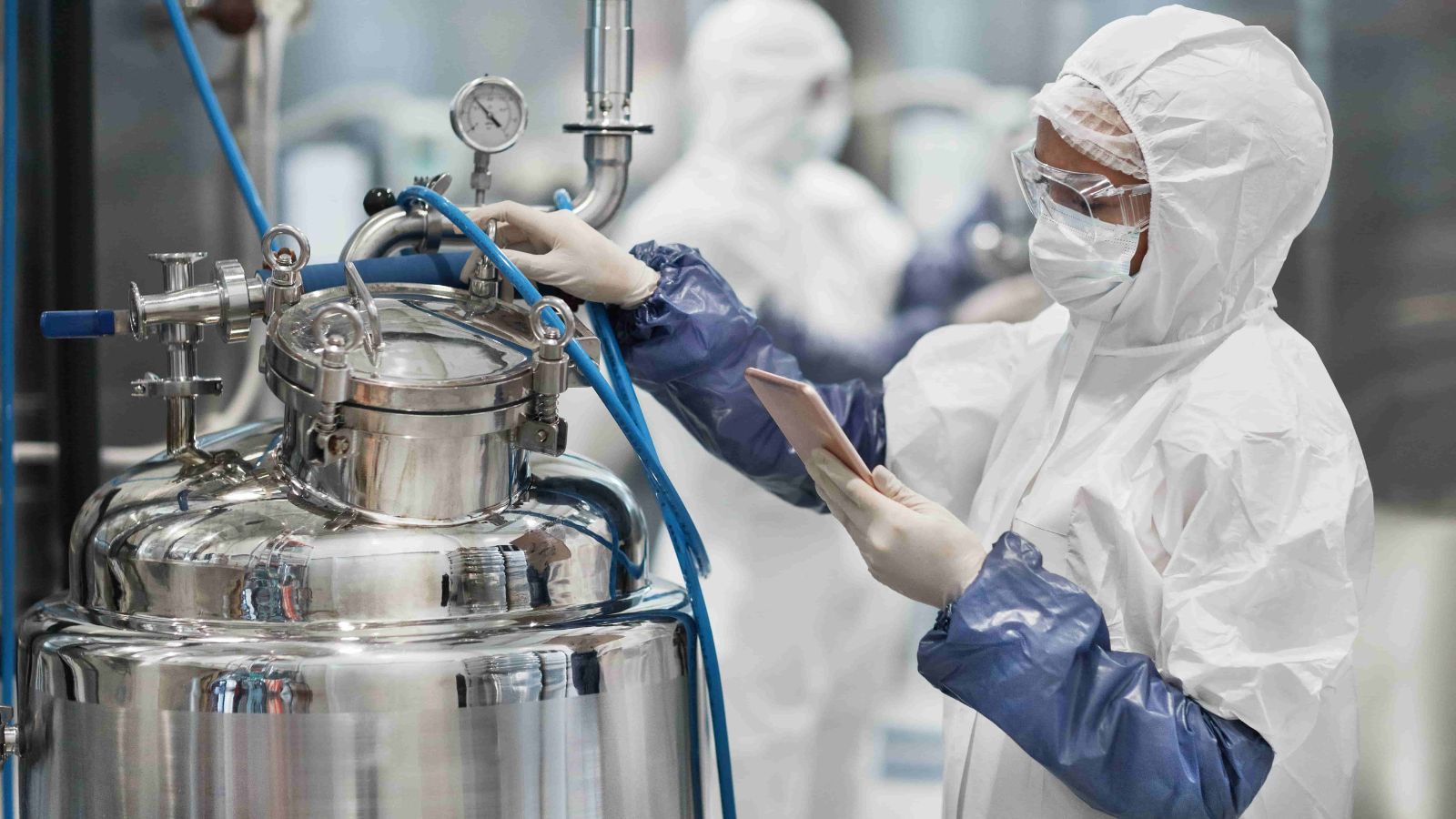6 techniques for implementing quality control in manufacturing
One product recall due to a faulty product can devastate any company. The best way to avoid this is to have a process in place for monitoring your finished goods. In this article, we look into the quality control process and 6 techniques you can follow to ensure the best quality for your products and customers.

Tejas Shah

Ensuring that your business consistently manufactures high-quality products is vital for its success.
A top-quality manufacturer’s reputation promises customer loyalty and increasing business volumes. However, figuring out quality control in your manufacturing processes can be tricky.
Read on to find out more about the options you have when it comes to quality control.
Implement headache-free quality control in manufacturing
Start using quality control practices with a live inventory management system for real-time overviews of inventory and operations.
What is quality control in manufacturing?

Quality control (QC) is the process of ensuring that the products that you manufacture meet certain quality standards.
Conformance to these standards can be self-imposed, requested by your customers, or by external organizations such as the International Organization for Standardization (ISO). Quality control techniques came to the forefront in the manufacturing industry largely due to the efforts of Dr. W. Edwards Deming. His pioneering work led to the quick economic turnaround of Post-World War II Japan. Dr. Deming promoted the idea of the PDSA (Plan-Do-Study-Act) cycle, which is a systematic process for gaining valuable learning and knowledge for the continual improvement of a product, process, or service.
It has the following stages:
- Plan — Identifying a goal or purpose and putting together a plan of action
- Do — Components of the plan are implemented on a small scale if needed
- Study — Outcomes are monitored to test the validity of the plan
- Act — To integrate discoveries learned during the entire cycle and reformulate the plan accordingly
The PDSA cycle, also known as the Deming cycle, has many similarities to the more sophisticated lean principles in manufacturing.
Both methodologies are designed to help your business to produce high-quality products.
6 quality control techniques in manufacturing you can use
As noted earlier, an inspection of the final products and testing their conformance to quality standards form a large part of quality control. Depending on the type of products you manufacture, regulations, and international standards, you can employ different techniques to ensure their quality.
Here are the various quality control approaches that can be employed in your manufacturing workflows.
1. 100% inspection method
In this method, 100% of your products need to be inspected to ensure that they comply with the quality standards.
For instance, if you manufacture perishable inventory like food or pharmaceuticals, you could be required by law to make sure that 100% of your products have the expiry dates printed on the labels before they leave your facility.
However, this method can be quite expensive and often unnecessary. It is only employed when the cost of producing a substandard product is extremely high.
2. Statistical quality control methods
Used as an umbrella term for different methods that rely on statistics to implement quality control. These methods form the bedrock of all manufacturing quality control practices. They include specific methods such as acceptance sampling or quality control charts to implement quality control.
For example, in acceptance sampling, a certain number of products are sampled from the entire lot and inspected for defects. The entire lot is accepted if the number of defective products is lower than a certain threshold and rejected otherwise.
Statistical quality control methods are faster and cheaper than the 100% inspection method. However, in these methods, the focus is only on the end product.
3. Statistical process control methods
Statistical process control methods (or SPC manufacturing) were first laid out by Walter A. Shewhart in the early 1920s and formed the source of Dr. Demings’ pioneering work in the field. They employ statistical methods for quality control like the previous methods. However, they also look at processes instead of focusing on the final products.
An important aspect of these methods is early detection and prevention.
4. Total Quality Management (TQM)
Originating in 1985, this style of quality control focuses on all members of an organization participating in improving processes, products, services, and the culture in which they work. This method echoes Dr. Demings’ philosophy of “Quality is everyone’s responsibility”.
5. Six Sigma (6σ)
This is a set of quality and process improvement techniques with specific targets, such as bringing the number of defects below a certain threshold. For instance, Six Sigma refers to the ability of a company to manufacture an extremely high proportion of output within a specification of 3.4 defects per million units.
This method originated from Motorola, and at its peak, Motorola attributed savings of about $17 billion dollars to the Six Sigma techniques of manufacturing.
6. Lean manufacturing
Over time, the dominance of lean manufacturing techniques paved the way for a hybrid quality control method called Lean Six Sigma. It was introduced in 2001 by the book Leaning into Six Sigma: The Path to Integration of Lean Enterprise and Six Sigma.
As it is clear from the name, it combines the best lean inventory techniques, such as eliminating the eight different types of wastes (also called Muda in lean) and the high standards of delivering quality products of Six Sigma.

Quality control vs. quality assurance
It is fairly common to get quality control and quality assurance mixed up since they’re both part of quality management practices.
Broadly speaking, quality control deals mostly with inspecting your goods and services to ensure that they meet specific requirements. While quality assurance deals with management practices to make sure that your business produces quality output.
Quality control methods are reactive in nature since they focus on finding defective products before they reach the customers. Whereas quality assurance methods are proactive and try to fix the processes in order to make sure that defects aren’t introduced in the first place.
However, the newer quality control techniques that we discussed also place a great focus on management practices, so the difference between quality control and quality assurance becomes even smaller.
How does software help with manufacturing quality control?
Clearly, the newer quality control methods we discussed are sophisticated and fairly advanced. As a result, plenty of software solutions called Quality Management Systems (QMS) help your company comply with various quality standards. However, these solutions can be prohibitively expensive.
As an alternative, a number of manufacturing ERP and MRP software come with tools that can help you manage quality as well. For instance, the end-to-end traceability features of Katana can help you track materials across batches and stay on top of expiry dates to avoid stockouts or, even worse, a defective product making it to the marketplace.
Katana also comes with features such as real-time shop floor control and production planning, which can help you optimize your manufacturing processes and help you deliver high-quality products.
Request a demo and see for yourself why thousands of manufacturers use Katana to grow their businesses and manage the complexities of manufacturing.

Tejas Shah
Table of contents
Get inventory trends, news, and tips every month
Get visibility over your sales and stock
Wave goodbye to uncertainty with Katana Cloud Inventory — AI-powered for total inventory control